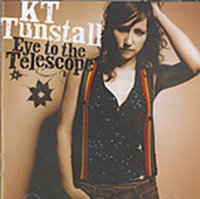Pockets
Living in LA has liberated my ideas about success. There was a time when I thought artists had two options: 1) Become wildly popular and be known nationally or 2) Work in obscurity generating art for Art's sake.
As others have mentioned, LA is a city that values the independant spirit, the mom and pop shops, the underground musicians, the quirky artists. And as a result a vibrant community of artists, from all over the world, have found their voice here. It's been alot of fun running across these pockets of creativity.
On a personal level I've been inspired to expand my definition of success. Suddenly the idea of doing readings in a small coffee shop for an audience of 12 sounds really good. Suddenly, a blog written for a handful of readers is -- cool.
With that said, not all of the people below are independant/underground artists. I just wanted to share the pockets of creativity I've been enjoying.

Book/Author:
"Don't Let's Go to the Dogs Tonight," by Alexandra Fuller. The memoir of a white-african girl growing up in Rhodesia, Malawi, and Zambia.

Literary Journal:
"Rock & Sling," a journal of literature, art, and faith based out of Washington. R&S proves this statement: "Creativity is the natural result of Spirituality."
- E. McManus
Magazine:
"West" magazine, a publication of the Los Angeles Times. Where do they find these writers and topics? Riveting! This is fast becoming my second favorite thing about Sundays.

Album/Musician:
"Eye to the Telescope" KT Tunstall. For the first two weeks I played this album in the background, Dwayne walked by oblivious. One day, he suddenly turned around and said, "This is a really good album!" Now, he says it everytime he hears her, as if he's never said it before.
Radio Station:
KCRW - "Hand-picked music and NPR news."

Visual Art:
"Ashes and Snow," currently exhibited at the Santa Monica pier. Words just can't~ You must see for yourself!

Dance:
Urban Poets - specifically Mosaic's dance team. Okay so you can't and probably won't get a chance to see these preformances, unless you come to a service. But I have now discovered the art of dance as worship. These preformances literally make me shake. You can feel the entire sanctuary tense with anticipation when the dancers walk onto the stage. How many times does a church preformance (dance, drama, song or otherwise) make you want to burst from your seat in a standing ovation? They move us, and never for a moment do I think about their bodies while I watch them dance.
Enjoy!
As others have mentioned, LA is a city that values the independant spirit, the mom and pop shops, the underground musicians, the quirky artists. And as a result a vibrant community of artists, from all over the world, have found their voice here. It's been alot of fun running across these pockets of creativity.
On a personal level I've been inspired to expand my definition of success. Suddenly the idea of doing readings in a small coffee shop for an audience of 12 sounds really good. Suddenly, a blog written for a handful of readers is -- cool.
With that said, not all of the people below are independant/underground artists. I just wanted to share the pockets of creativity I've been enjoying.

Book/Author:
"Don't Let's Go to the Dogs Tonight," by Alexandra Fuller. The memoir of a white-african girl growing up in Rhodesia, Malawi, and Zambia.

Literary Journal:
"Rock & Sling," a journal of literature, art, and faith based out of Washington. R&S proves this statement: "Creativity is the natural result of Spirituality."
- E. McManus
Magazine:
"West" magazine, a publication of the Los Angeles Times. Where do they find these writers and topics? Riveting! This is fast becoming my second favorite thing about Sundays.

Album/Musician:
"Eye to the Telescope" KT Tunstall. For the first two weeks I played this album in the background, Dwayne walked by oblivious. One day, he suddenly turned around and said, "This is a really good album!" Now, he says it everytime he hears her, as if he's never said it before.
Radio Station:
KCRW - "Hand-picked music and NPR news."

Visual Art:
"Ashes and Snow," currently exhibited at the Santa Monica pier. Words just can't~ You must see for yourself!

Dance:
Urban Poets - specifically Mosaic's dance team. Okay so you can't and probably won't get a chance to see these preformances, unless you come to a service. But I have now discovered the art of dance as worship. These preformances literally make me shake. You can feel the entire sanctuary tense with anticipation when the dancers walk onto the stage. How many times does a church preformance (dance, drama, song or otherwise) make you want to burst from your seat in a standing ovation? They move us, and never for a moment do I think about their bodies while I watch them dance.
Enjoy!



